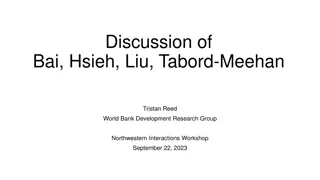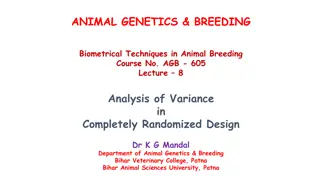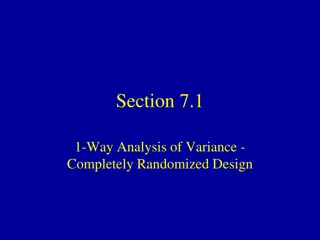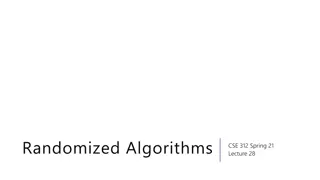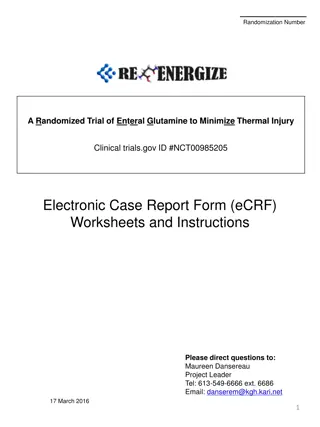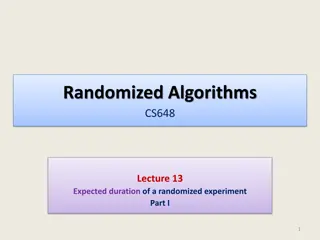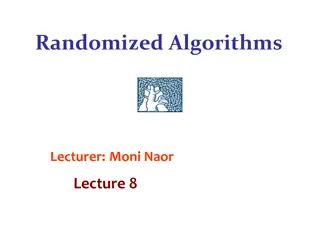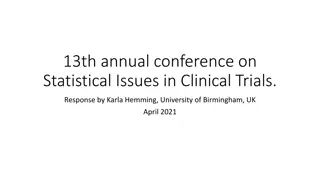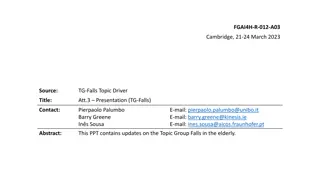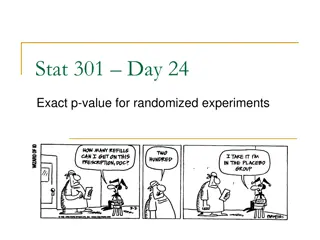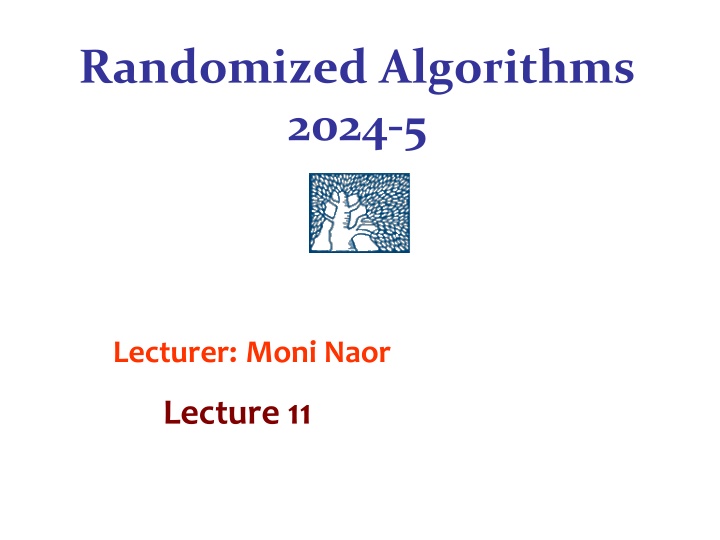
Randomized Algorithms 2024-5: Guessing Cards and Communication Complexity Bounds
Explore the concepts of guessing cards, simultaneous communication complexity bounds, and efficient encoding techniques in randomized algorithms. Dive into strategies for memory-based card guessing and optimal memory allocation for maximizing correct guesses. Discover the underlying principles of simultaneous communication complexity bounds with insightful lecture recaps and practical examples presented by lecturer Moni Naor.
Uploaded on | 2 Views
Download Presentation

Please find below an Image/Link to download the presentation.
The content on the website is provided AS IS for your information and personal use only. It may not be sold, licensed, or shared on other websites without obtaining consent from the author. If you encounter any issues during the download, it is possible that the publisher has removed the file from their server.
You are allowed to download the files provided on this website for personal or commercial use, subject to the condition that they are used lawfully. All files are the property of their respective owners.
The content on the website is provided AS IS for your information and personal use only. It may not be sold, licensed, or shared on other websites without obtaining consent from the author.
E N D


